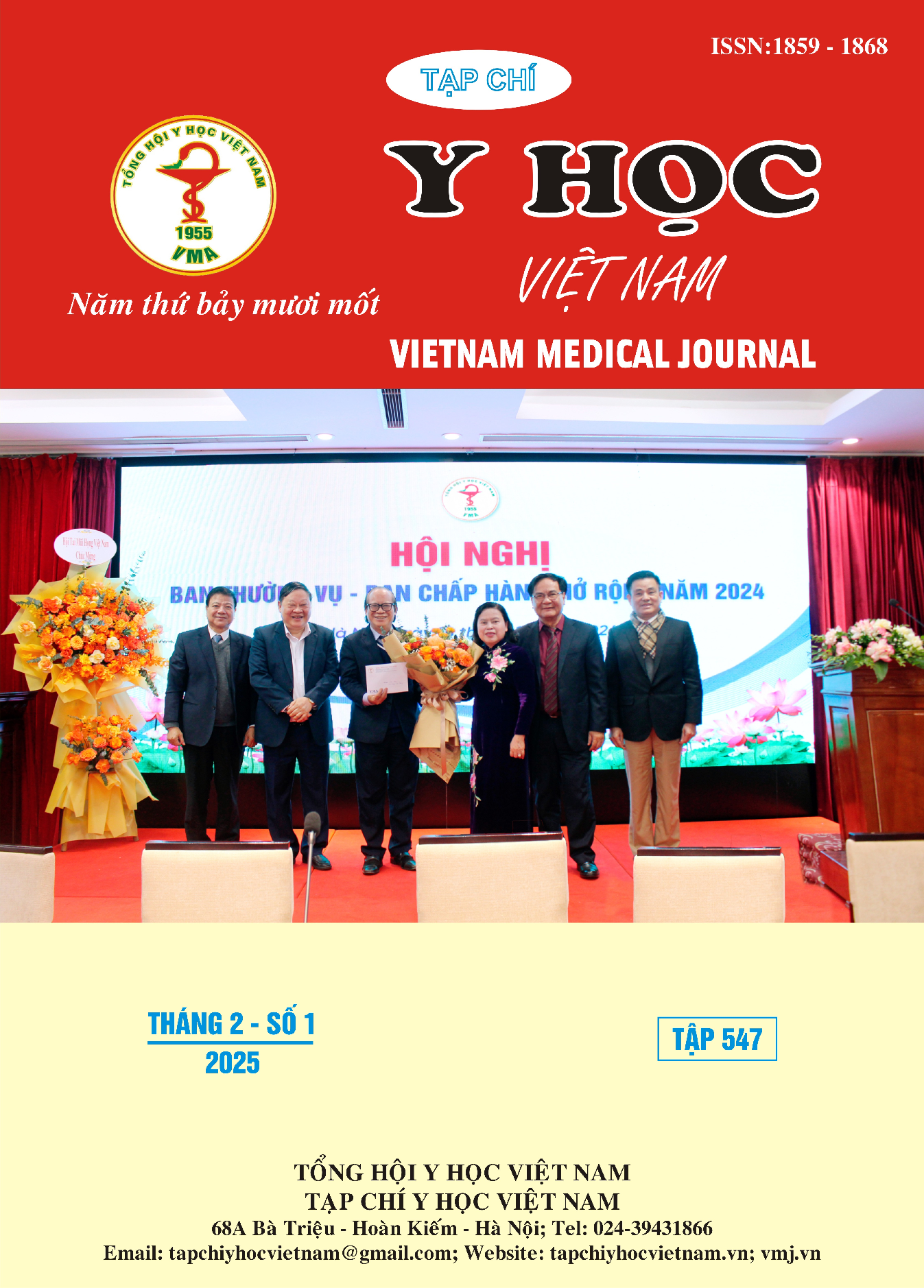SIGNAL-TO-NOISE RATIO AND CONTRAST-TO-NOISE RATIO IN LOW-DOSE CT FOR MONITORING TRAUMATIC BRAIN INJURY
Main Article Content
Abstract
Objective: This study aims to investigate the characteristics of signal-to-noise ratio (SNR) and contrast-to-noise ratio (CNR) in low-dose computed tomography (CT) for monitoring traumatic brain injury (TBI). Subjects and Methods: A cross-sectional descriptive study was conducted on 35 patients (P) being monitored for TBI. Low-dose CT scans of the brain using an 80 kV protocol were performed at Viet Duc Hospital from May 2024 to October 2024. Brain structure densities in different regions were measured and compared with standard-dose CT scans (120 kV) regarding radiation dose, SNR, and CNR. Results: The SNR decreased in low-dose CT compared to standard-dose CT at the following regions: frontal cortex (9.31 ± 2.992 vs. 12.47 ± 4.996), frontal white matter (6.77 ± 1.847 vs. 8.05 ± 2.565), cerebellar cortex (7.91 ± 2.889 vs. 8.99 ± 2.612), and pons (6.60 ± 1.487 vs. 7.69 ± 2.087) (p < 0.05). However, SNR increased in hematoma regions from 10.92 ± 2.821 to 13.62 ± 4.201 (p < 0.05). The CNR comparison showed a decrease in low-dose CT compared to standard-dose CT in the frontal region (2.03 ± 0.551 vs. 2.49 ± 0.572) and cerebellar vermis (0.16 ± 0.329 vs. 0.24 ± 0.254) (p < 0.05). However, CNR in hematoma regions showed no significant difference between the two groups (p = 0.567). Conclusion: Low-dose CT significantly reduces radiation exposure compared to standard-dose CT while providing higher SNR for hematoma and maintaining comparable CNR.
Article Details
Keywords
low-dose CT, computed tomography, traumatic brain injury, CT radiation dose.
References
2. Morton RP, Reynolds R, Ramakrishna R, et al. Low-Dose Head Computed Tomography in Children: A Single Institutional Experience in Pediatric Radiation Risk Reduction. Journal of Neurosurgery Pediatrics. 2013;12(4):406-410. doi:10.3171/2013.7.peds12631
3. Moghier MLAE. Correlation Between Brain Imaging and Glasgow Coma Scale in Traumatic Head Injury in Pediatrics. International Journal of Medical Imaging. 2015;3(3):63. doi:10.11648/ j.ijmi.20150303.14
4. Southard R, Bardo DME, Temkit M, Thorkelson M, Augustyn R, Martinot C. Comparison of Iterative Model Reconstruction Versus Filtered Back-Projection in Pediatric Emergency Head CT: Dose, Image Quality, and Image-Reconstruction Times. American Journal of Neuroradiology. 2019;40(5): 866-871. doi:10. 3174/ajnr.a6034
5. Niu Y, Mehta D, Zhang ZR, et al. Radiation Dose Reduction in Temporal Bone CT With Iterative Reconstruction Technique. American Journal of Neuroradiology. 2012;33(6):1020-1026. doi:10.3174/ajnr.a2941
6. Trần Văn Dũng, Hoàng Thùy Dung, Lưu Hồng Duy. Chương trình sáng lọc ung thư phổi sử dụng chụp CT liều thấp trên nhóm người nguy cơ cao: Tổng quan tài liệu và thực tế tại Việt Nam. Tạp chí Y học Việt Nam. 02/19 2023; 522 (2)doi:10.51298/vmj.v522i2.4378
7. Wu D, Wang G, Bian B, Liu Z, Li D. Benefits of Low-Dose CT Scan of Head for Patients With Intracranial Hemorrhage. Dose-response: a publication of International Hormesis Society. Jan-Mar 2020;19(1):1559325820909778. doi:10.1177/ 1559325820909778
8. Doddamani R, Gupta S, Singla N, Mohindra S, Singh P. Role of Repeat CT Scans in the Management of Traumatic Brain Injury. Indian Journal of Neurotrauma. 2012;9(1):33-39. doi:10. 1016/j.ijnt.2012.04.007
9. Rabinowich A, Shendler G, Ben‐Sira L, Shiran SI. Pediatric Low-Dose Head CT: Image Quality Improvement Using Iterative Model Reconstruction. The Neuroradiology Journal. 2023; 36(5): 555-562. doi:10.1177/ 19714009231163559


